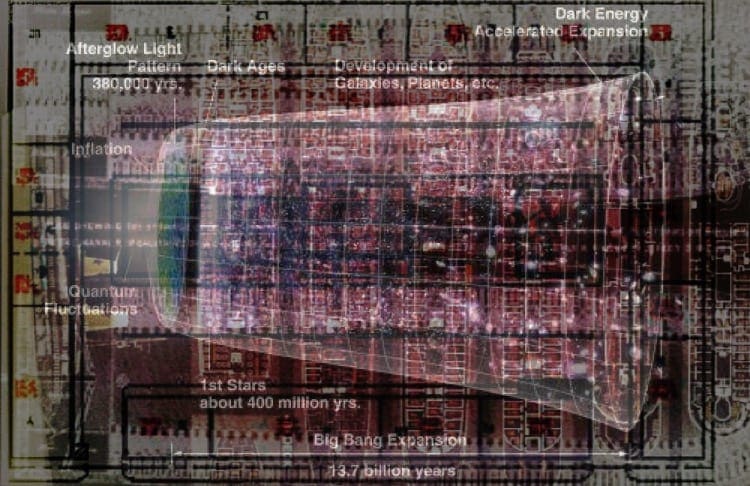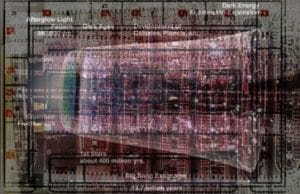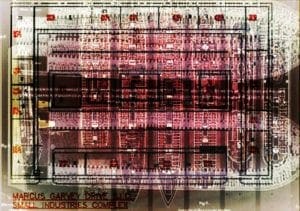Reverse Gentrification of the Future Now: Essay by Rasheedah Phillips
Commissioned in conversation with Moor Mother’s Circuit City, running this June 20–22, as part of the High Pressure Fire Service series.
The present realities of housing for low-income people living in Philadelphia are located temporally-spatially near the one in Circuit City. We are experiencing an affordable housing crisis, and this crisis is exacerbated by the average of 22,000 eviction filings each year and the unknown number of illegal evictions. In my work as Managing Attorney of the Housing Unit at Community Legal Services, where we provide legal representation and advice to more than 3,000 low-income tenants a year, I hear countless stories of tenants who face racial, sex, gender, family, ethnicity, and disability discrimination from landlords; stories of tenants intimidated into not complaining about substandard housing conditions that exacerbate health and safety problems; or tenants who received eviction filings from disgruntled landlords that have resulted in virtual blacklisting from future homes and opportunities for stability. Growing displacement and mass evictions of entire buildings of often low-income residents is a particularly vicious form of eviction that has widespread health and economic impacts, and destroys economic, cultural, and racial diversity in neighborhoods. Mass evictions, often unexpected, further aggravate the city’s shortage of affordable housing—existing affordable housing units are often lost forever, putting pressure on resources and housing stock elsewhere in the City and concentrating poverty in particular neighborhoods.
Compounding these issues is pervasive housing discrimination – single mothers and their children, seniors, Black people, LGBTQ people, immigrants, and people living with disabilities are disproportionately impacted by evictions and lack of access to safe, habitable, and affordable housing. Tenants face systemic and individual discrimination at every stage of the process – they are barred from getting into a new home for discriminatory reasons, and often kicked out of their homes for those same reasons.1 The ACLU, for instance highlights how “women of color bear the burden of eviction,” noting that women of color made up 62% and 70% of the tenants facing in eviction in Chicago and Philadelphia respectively.2 These and other instances of structural inequity related to housing disproportionately impact the City’s poor, Black and Hispanic populations live in racially concentrated poverty.3 This loss of housing has a distinct racial impact, where 63% of African-Americans live in project-based housing compared with 44% of the city’s population, and where African-Americans are disproportionately more likely to carry severe housing cost burdens in the city.
These types of inequalities are often framed in terms of spatial inequality and displacement from location. However, as Helga Nowotowny notes, “power, exercised by central authorities, establishes itself over space and over time.”4 (emphasis added). Hierarchies of time, inequitable time distribution, and uneven access to safe and healthy futures inform intergenerational poverty in marginalized communities the same ways that wealth passes between generations in traditionally privileged families. Sociologist Jeremy Rifkin says that “temporal deprivation is built into the time frame of every society,” where people living in poverty are temporally poor as well as materially poor.”5 For example, time poverty is routinely used to penalize marginalized people in the justice system, where being ten minutes late to court can mean losing your job, kids, home, and freedom. Time and temporal inequities show up at every step of the eviction process, for example, from the short or fully waivable notice requirements for termination of a lease agreement, to the time required for an evicted family to vacate a unit that is severely out of line with the time needed to secure new housing. Inevitably, marginalized Black communities are disproportionately impacted by both material, spatial, and temporal inequalities in a linear progressive society, with many Black communities forced to occupy “temporal ghettos” as well as spatial ones.
Circuit City considers both the implications of time and of space involved in privatization of public housing, gentrification, displacement, and redevelopment. There is no set year or place in the play, but instead a layering of multiple temporal spaces. The residents of Circuit City are integrating the time(s) of redevelopment, privatization, and hyper-gentrification, into the pre-established temporal dynamics of the community, layered over and within the communal historical memory and the shared idea of the future(s) of that community. Nested within those layers are individual, subjective temporalities and the lived realities of the residents, at odds with the linear, mechanical model of time on which Circuit City and its external spatial-temporal constructs are etched. It takes as its central provocation a practical strategy for achieving a Black flight, a reverse gentrification, and inverse displacement, and the conditions necessary for temporal autonomy and spatial agency. Circuit City is presented using Black Quantum Futurism praxis as a critical framework, fusing Afrodiasporan philosophies and rituals with quantum physics, recovering artifacts of Black temporal consciousness, and dismantling oppressive social temporal constructs.
These images overlay cosmic time with slaveships with microchips, circuit boards, and public housing layouts, attempting to catch a psychic space that transcends times, or co-mingles with past, present, future.
1A recent study by the Urban Institute shows that two-thirds of landlords in Philadelphia refuse to accept tenants with Housing Choice (Section 8) vouchers, A Pilot Study of Landlord Acceptance of Housing Choice Vouchers, The Urban Institute, (August 2018) https://www.urban.org/research/publication/pilot-study-landlord-acceptance-housing-choice-vouchers.
2Sandra Park, Unfair Eviction Screening Policies Are Disproportionately Blacklisting Black Women (August 19, 2017). https://www.aclu.org/blog/womens-rights/violence-against-women/unfair-eviction-screening-policies-are-disproportionately
3Philadelphia’s Poor Who they are, where they live, and how that has changed, Pew Charitable Trusts, (November 2017) https://www.pewtrusts.org/-/media/assets/2017/11/pri_philadelphias_poor.pdf; City of Philadelphia and the Philadelphia Housing Authority Assessment of Fair Housing (December 12, 2017) https://fairhousingrights.org/wp-content/uploads/2017/12/afh-2016-for-web.pdf
4Helga Nowotny, Time: The Modern and Postmodern Experience, p. 148 (1994)
5Jeremy Rifkin, Time Wars, p. 192 (1989).





